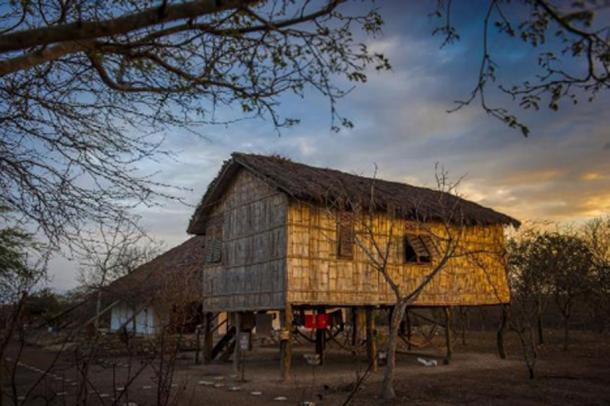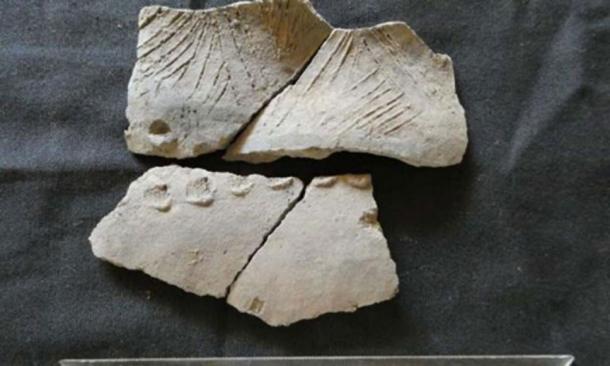
Curious Ceramics: Traces of Mysterious Pre-Hispanic Culture Emerge in Ecuador
Archaeologists working at the pre-Hispanic site of Real Alto near the coast of Ecuador have discovered the remnants of a mysterious culture dating to the earliest stages of inhabitation in the Americas.
A press release on the discovery states that the international research team included members of the Far Eastern Federal University (FEFU), Institute of Archeology and Ethnography SB RAS (Russia); Escuela Superior Politécnica del Litoral (ESPOL, Ecuador); and Tohoku University (Japan).
The FEFU researchers have been working in Ecuador since 2014 and have made various discoveries in the last few years. Most recently, they’ve found ceramic shards that date to one of the earliest periods of inhabitation of the Real Alto site. Radiocarbon analysis by mass spectrometer shows the ceramics date back to 4640 – 4460 BC, a time that overlaps with the Valdivia culture, one of the oldest pottery-featured cultures in North and South America. The article on the result of the most recent excavations is published in Antiquity.

This is the museum complex of Real Alto site, Ecuador. (FEFU press office)
The Pre-Hispanic Cultures at the Real Alto Site
In the press release, it’s explained that during the excavations at the Real Alto site, Russian scientists found the fragments of ceramic vessels at a depth of 75 cm to 1 meter (29.53 -39.37 inches) underground. They belong to the relatively unknown San Pedro complex which borders or coincides with the first stages of the Valdivia culture – a culture with internationally famous ceramic figures that serve as a symbol of Ecuadorian archaeology.
- Pucara de Rumicucho Is More than just an Incan Stone Fortress
- Cochasquí: The Immense Pyramids of Ecuador Provide Evidence for a Forgotten Civilization
- The Truth About Father Crespi and His Missing Artifacts Finally Revealed

A shard of an ancient ceramic vessel from the insufficiently studied San Pedro complex found on Real Alto site, Ecuador. Source: FEFU press office
However, the San Pedro pottery fragments differ from the Valdivian designs by the decoration used and the techniques that were applied in its creation. For example, the Valdivia vessels are red-slipped and burnished and show smooth, deliberate, carvings, however, the researchers describe the new pottery fragments differently in their article on the discovery:
“Sherds are either black or black-and-brown, from bowls and globular, necked jars, 4–5mm thick. They were made using grog and stone temper, including some large (approximately 3mm) particles visible on the surface. The pottery is handmade and constructed from clay coils that were subsequently smoothed without burnishing on either the exterior or the interior. It appears to have been fired at a low temperature (approximately 800–1000°C), and the appearance is typical of firing in reducing conditions (limiting the amount of oxygen during the firing process). The rough, geometric decorations were made with shallow, linear incisions that had irregular margins as well as finger-gouging and rows of round punctation. Charcoal residues suggest that some vessels were used for cooking.”

San Pedro sherds, 2015. (Kanomata et al. 2019)
The shards of San Pedro pottery may be associated with fragments that were retrieved in the 70s and 80s from Real Alto and other archaeological sites, but they can’t be definitely attributed to any particular culture, according to the FEFU press release. Thus, the researchers have found evidence supporting a previously unknown archaeological culture that lived in the area during the formative period. It existed at the Real Alto site and developed simultaneously with the Valdivia culture on the Pacific coast of Ecuador.
Real Alto is a large archaeological site covering 12 hectares in the Santa Elena province. It was first discovered by an Ecuadorian archaeologist in 1971 and it has been linked to the San Pedro and Valdivia cultures. It’s believed that in the settlement’s heyday there were some 80 to 100 houses located at the site around a large central plaza. Previous discoveries at the site show that the inhabitants were focused on obtaining agricultural and maritime resources and they created textiles, shell objects, and clay sculptures.
Pottery was a Technical Breakthrough
Alexander Popov, Head of the Russian archaeological expedition to Ecuador and Director of the Educational and Scientific Museum FEFU of the School of Arts and Humanities of Far Eastern Federal University, stresses the importance of the discovery for understanding ceramics in the development of culture:
“The mass emergence of pottery was a kind of technical breakthrough associated with many aspects of human life and the level of economic development in different parts of the globe. Ceramic vessels belonging to different cultures developed simultaneously, confirming that our ancestors had evolved in terms of cultural diversity. It is curious that, despite the different vectors of human development, in the technological sense we were moving in the same direction.”
Popov says the next stage of excavations will focus on the search for more artifacts left by the unidentified culture. Such findings may help determine conditions of cultural development in the area more accurately.

San Pedro sherds found in 2017. (Kanomata et al. 2019)
Researchers are Seeking More Archaic Artifacts in Ecuador
In their press release, the researchers say that they “believe that pottery fragments from an even more archaic point of time can be found in Ecuador, i.e. a more archaic cultural layer may exist.” With those artifacts, one could determine whether pottery was invented in South America at the same time as other ceramic cultures across the globe, or if it was imported.
The information will help with understanding the processes of parallel development of people on different sides of the Pacific Ocean and, in general, the multi-vector development of human communities – which is the major focus for FEFU researchers.
The FEFU team is looking for similarities and differences in the development of human civilization in South America and East Asia. They compare the adaptation of ancient populations to environmental changes and how that influenced economic, domestic, and other aspects of life.

Excavations at the Real Alto site in Ecuador. (FEFU press office)
Finds from the Las Vegas Culture
Previously, FEFU archaeologists in Ecuador found ancient human remains dating back to 6 to 10 thousand years ago. Those excavations were carried out in the Atahualpa canton, and yielded artifacts that belong to the Stone Age Las Vegas culture.
- Newly Discovered 10,000 Year Old Las Vegas Culture Burials are the Oldest in Ecuador
- Who Stole the Gold? The Smoke Clears Around the Tayos Caves in Ecuador
- Lake of Blood: The dark history of Laguna Yahuarcocha, Ecuador
This culture is considered the only preceramic culture on the coast of Ecuador and also the earliest settlement in what is now called Ecuador. It has been dated to the Holocene period from 8000-4600 BC. Theirs was one of the first societies in South America to make the shift from hunting and gathering to agriculture. Some of the Las Vegas settlements may now be covered due to rising sea levels. No one knows what happened to the Las Vegas culture, but the area they lived in was deserted for 1000 years following 4600 BC. Then the Valdivia culture arose in the same location.
One of the most famous archaeological finds from this cultural period is the “ Amantes de Sumpa ” (Lovers of Sumpa), which is a double burial held in a museum in La Libertad. The Amantes de Sumpa died when they were between 20-25 years old and the nature of their burial suggests that they were close to each other and important members of their society. In general, Las Vegas era burials show that this culture had specific funerary rites. They wrapped the bodies of the deceased in fabric and then buried them with grave goods, such as shell objects, beside their houses. Large rocks were placed over the burial to protect it.

Los Amantes de Sumpa – a double burial from the Las Vegas culture. ( Manabi….Ecuador)
Top Image: Example of a typical Valdivia ceramic figurine. (Alicia McDermott)















